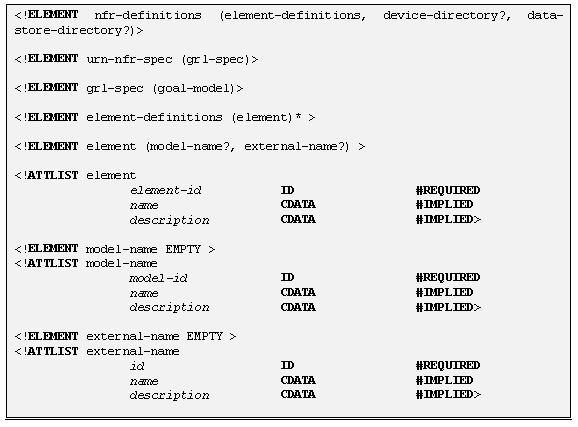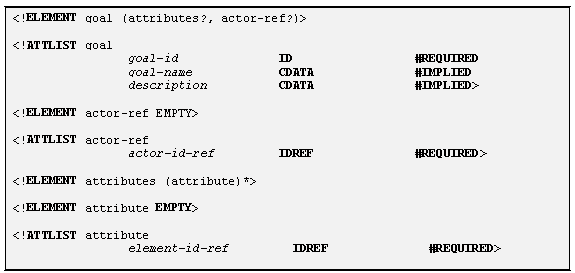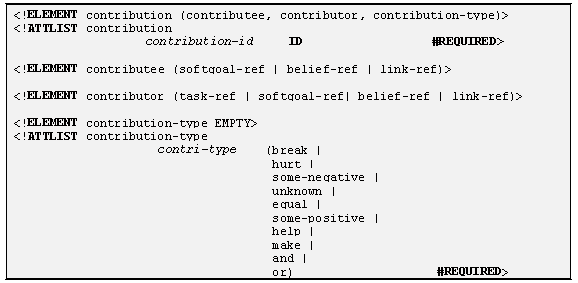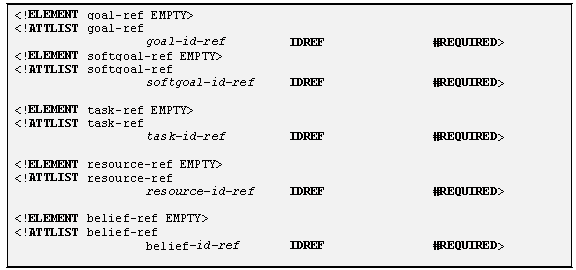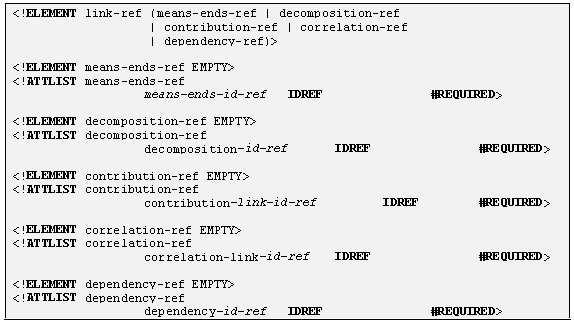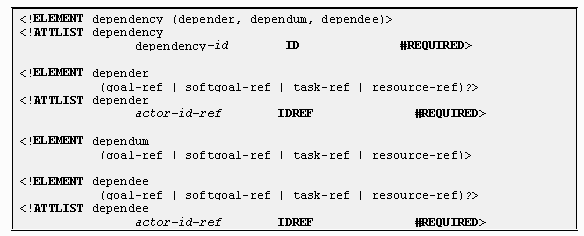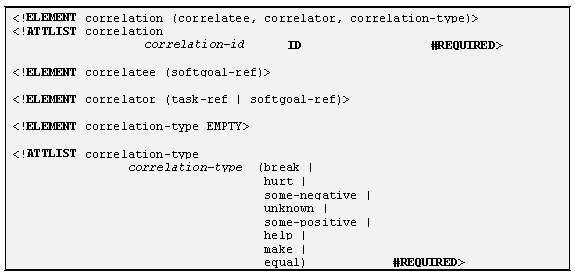 University
of Toronto, CANADA
University
of Toronto, CANADA
GRL Ontology
GRL (Goal-oriented Requirement Language) is a language for supporting goal-oriented modelling and reasoning of requirements, especially for dealing with non-functional requirements (NFRs). It provides constructs for expressing various types of concepts that appear during the requirement process. There are three main categories of concepts: intentional elements, intentional relationships, and actors. The intentional elements in GRL are goal, task, softgoal, belief and resource. The intentional relationships include: means-ends, decomposition, contribution, correlation, and dependency. They are intentional because they are used for models that allow answering questions such as why particular behaviours, informational and structural aspects were chosen to be included in the system requirement, what alternatives were considered, what criteria were used to deliberate among alternative options, and what the reasons were for choosing one alternative over the other.This kind of modelling is different from the detailed specification of what is to be done. Here the modeller is primarily concerned with exposing "why" certain choices for behaviour and/or structure were made or constraints introduced. The modeller is not yet interested in the "operational" details of processes or system requirements (or component interactions). Omitting these kind of details during early phases of analysis (and design) allows taking a higher-level (sometimes called a strategic stance) towards modelling the current or the future software system and its embedding environment. Modelling and answering "why" questions leads us to consider the opportunities stakeholders seek out and/or vulnerabilities they try to avoid within their environment by utilising capabilities of the software system and/or other stakeholders, by trying to rely upon and/or assign capabilities and by introducing constraint how those capabilities ought to be performed.
GRL provides support for reasoning about scenarios by establishing correspondences between intentional GRL elements and non-intentional elements in scenario models. Modelling both goals and scenarios is complementary and may aid in identifying further goals and additional scenarios (and scenario steps) important to stakeholders, thus contributing to the completeness and accuracy of requirements.
1 GRL Ontology
1.1 Non-Intentional Element
The language provides syntax for defining non-intentional elements. A non-intentional element may be imported from an external model. The main concern of these clauses is not to capture the syntax and semantics of the external model but to serves as references to the external model only. Non-intentional elements definition is used to navigate through the non-intentional model. The following statement defines a non-intentional element.ELEMENT <Element name> [<Informal Textual Description>] [IS <External Name> FROM <Model Name>]
1.1.1 Textual notation
<GRL Specification> : := [<Non-Intentional Element Definitions>]<Goal Model Definition><Non-Intentional Element Definitions>::= < Element Definition> { < Element Definition> }<Element Definition> : := ELEMENT <Element Name>[<Informal Textual Description>][IS <External Name> FROM <Model Name>]
1.1.2 XML definition
2 Goal model construction
A Goal-Oriented Requirement Model named <Model Name> can either be composed of a global goal model, or a series of goal models distributed in several actors.If the model includes more than one actors, then there might exist <Dependency Series>, which represent the intentional dependency relationships between agents.
2.1.1 Textual notation
<GRL Model Definition>::= GRL-MODEL <Model Name><Model Constructors>END-GRL-MODEL.<Model Constructors>::= <Model Constructor> { <Model Constructor>}<Model Constructor>::= [<Actors>]<Intentional Elements><Intentional Relationships>
2.1.2 XML definition
The following sections will introduce each of these kinds of constructs in turn.
3 Intentional elements
3.1 Overview
3.1.1 Textual notation
< Intentional Elements>::= < Intentional element > { < Intentional element >}< Intentional element> ::= <Task> | <Goal> | <Resource> | <Softgoal> | <Belief>
3.1.2 XML definition
3.2 Goal
A goal is a condition or state of affairs in the world that the stakeholders would like to achieve. How the goal is to be achieved is not specified, allowing alternatives to be considered.A goal can be either a business goal or a system goal. A business goal express goals regarding the business or state of the business affairs the individual or organisation wishes to achieve. System goal expresses goals the target system should achieve, which, generally, describe the functional requirements of the target information system.
3.2.1 Textual notation
<Goal> ::= GOAL<Goal Name> [<Informal Textual Description>] [ ATTRIBUTE <Attributes>][OWNER <Actor Name>]<Attributes > ::= <Attribute > { <Attribute >}<Attribute> ::= <Element Name>
3.2.2 Graphical notation
<Goal> ::= <Goal Symbol>CONTAINS <Goal Name > [Attributes]<Goal Symbol> ::=
